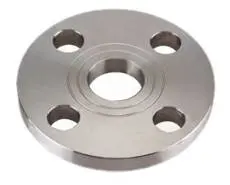-
Cangzhou Yulong Steel Co., Ltd.
-
Phone:
+86 13303177267 -
Email:
admin@ylsteelfittings.com
- English
- Arabic
- Italian
- Spanish
- Portuguese
- German
- kazakh
- Persian
- Greek
- French
- Russian
- Polish
- Thai
- Indonesian
- Vietnamese
- Zulu
- Korean
- Uzbek
- Hindi
- Serbian
- Malay
- Ukrainian
- Gujarati
- Haitian Creole
- hausa
- hawaiian
- Hebrew
- Miao
- Hungarian
- Icelandic
- igbo
- irish
- Japanese
- Javanese
- Kannada
- Khmer
- Rwandese
- Afrikaans
- Albanian
- Amharic
- Armenian
- Azerbaijani
- Basque
- Belarusian
- Bengali
- Bosnian
- Bulgarian
- Catalan
- Cebuano
- China
- China (Taiwan)
- Corsican
- Croatian
- Czech
- Danish
- Esperanto
- Estonian
- Finnish
- Frisian
- Galician
- Georgian
- Kurdish
- Kyrgyz
- Lao
- Latin
- Latvian
- Lithuanian
- Luxembourgish
- Macedonian
- Malgashi
- Malayalam
- Maltese
- Maori
- Marathi
- Mongolian
- Myanmar
- Nepali
- Norwegian
- Norwegian
- Occitan
- Pashto
- Dutch
- Punjabi
- Romanian
- Samoan
- Scottish Gaelic
- Sesotho
- Shona
- Sindhi
- Sinhala
- Slovak
- Slovenian
- Somali
- Sundanese
- Swahili
- Swedish
- Tagalog
- Tajik
- Tamil
- Tatar
- Telugu
- Turkish
- Turkmen
- Urdu
- Uighur
- Welsh
- Bantu
- Yiddish
- Yoruba

Nov . 07, 2024 21:23 Back to list
3D Modeling Techniques for Creating Pipe Bends in Engineering Applications
Understanding 3D Pipe Bends Importance and Applications
In various industries such as oil and gas, chemical processing, and manufacturing, the transportation of fluids and gases is a critical function. This is where piping systems come into play, and an essential component of these systems is the pipe bend. Among the different geometrical configurations of pipe bends, the 3D pipe bend stands out due to its unique advantages and applications.
A 3D pipe bend refers to a bending format where the bend radius is three times that of the pipe diameter, providing a smoother flow path for fluids and gases. This design minimizes turbulence and pressure loss, which are common challenges in piping systems. The 3D bend is particularly effective in situations where space constraints might prevent the use of standard elbow fittings, as it allows for a more gradual change in direction.
Understanding 3D Pipe Bends Importance and Applications
The manufacturing of 3D pipe bends involves various techniques, with the most common being hot bending and cold bending. In hot bending, the metal is heated to a pliable temperature, allowing for easier shaping. Conversely, cold bending is done at room temperature, which may require specialized tools to achieve the desired curvature. Each method has its own advantages depending on the material properties and specific requirements of the application.
3d pipe bend

One of the most significant applications of 3D pipe bends is in the oil and gas industry. These bends are often used in pipelines transporting crude oil, natural gas, and refined products. The smooth transitions provided by 3D bends help maintain pressure and flow rates, thus optimizing the efficiency of the entire system. Additionally, in processing plants, these bends help in directing materials through various stages of production without causing undue turbulence that could affect the quality of the output.
In the chemical industry, 3D pipe bends facilitate the flow of corrosive or hazardous materials. The reduced turbulence helps minimize the risk of erosion and allows for a more controlled flow, which is essential in processes where precision is critical. Furthermore, by optimizing the flow path and reducing the risk of backflow or stagnation, these bends contribute significantly to safety in chemical handling and processing.
Another critical application of 3D bends is in HVAC systems, where they are used to connect ducts and piping. The smooth transitions help maintain airflow efficiency, reducing energy consumption and improving the overall performance of heating and cooling systems.
In conclusion, 3D pipe bends are an indispensable component in modern piping systems across various industries. Their design not only enhances the efficiency and safety of fluid transport but also plays a critical role in maintaining the integrity and longevity of piping infrastructure. As industries continue to evolve, the importance of these bends is likely to increase, further driving the innovation and refinement of piping technologies. Whether navigating complex installations or facilitating vital transport, the 3D pipe bend remains a cornerstone of engineering excellence.
Latest news
-
ANSI 150P SS304 SO FLANGE
NewsFeb.14,2025
-
ASTM A333GR6 STEEL PIPE
NewsJan.20,2025
-
ANSI B16.5 WELDING NECK FLANGE
NewsJan.15,2026
-
ANSI B16.5 SLIP-ON FLANGE
NewsApr.19,2024
-
SABS 1123 FLANGE
NewsJan.15,2025
-
DIN86044 PLATE FLANGE
NewsApr.19,2024
-
DIN2527 BLIND FLANGE
NewsApr.12,2024
-
JIS B2311 Butt-Welding Fittings LR/SR 45°/90° /180°Seamless/Weld
NewsApr.23,2024











